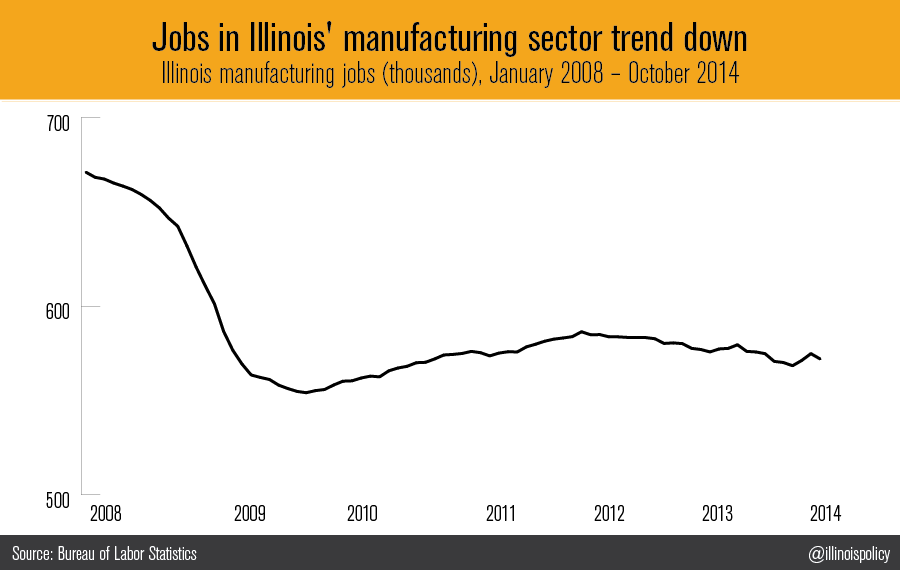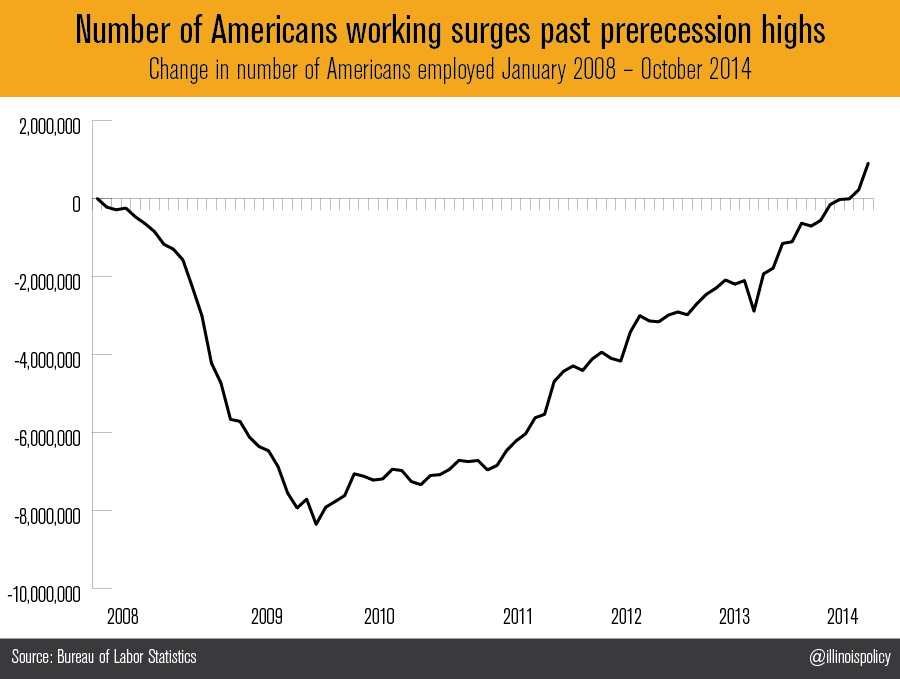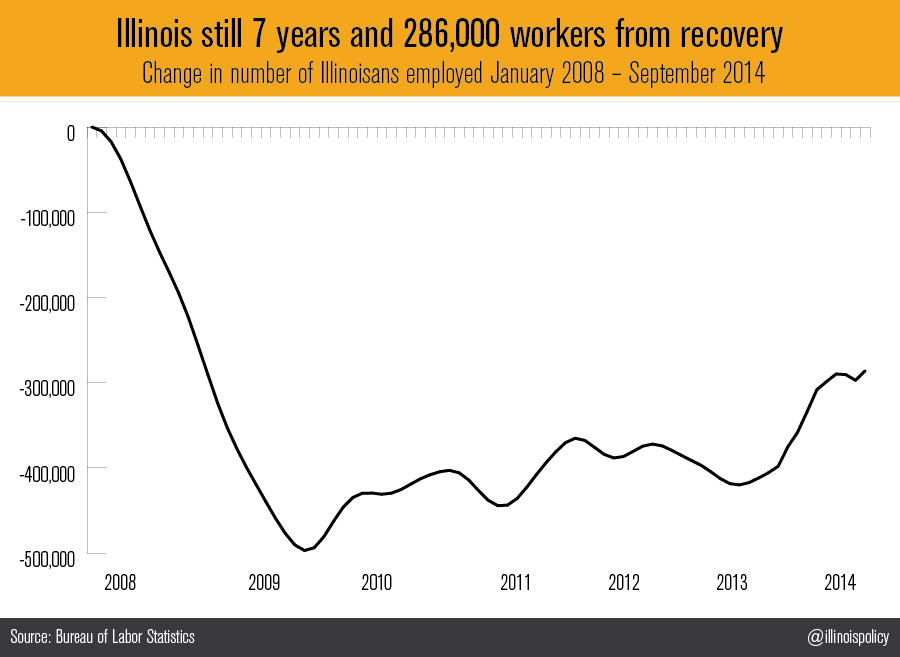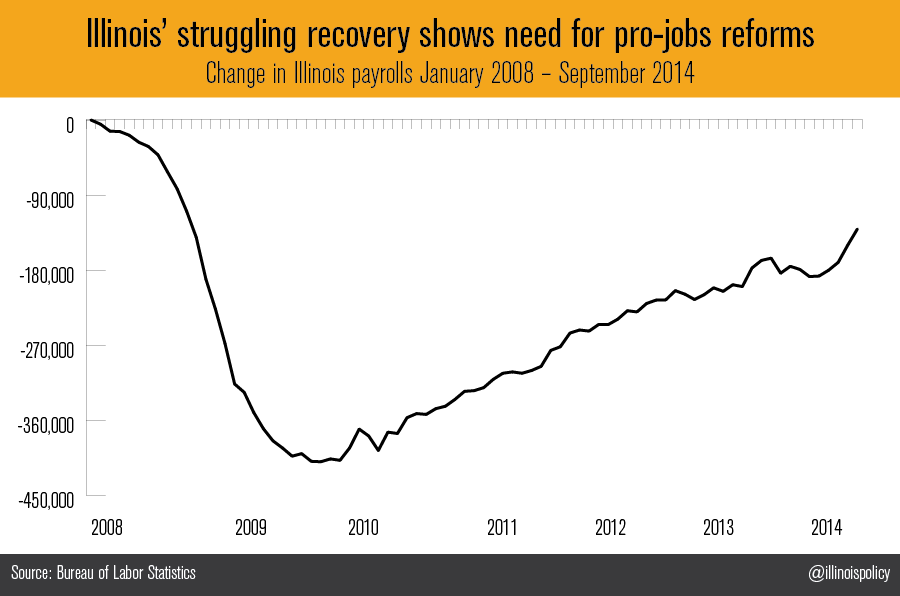U.S. recovery moves forward, time for Illinois to catch up
Illinois is still seven years and 286,000 workers from recovery.
The national unemployment rate fell to 5.8 percent from 5.9 percent in October, according to the Bureau of Labor Statistics’ household survey. The unemployment rate fell because the number of unemployed people dropped by 267,000, while the number employed grew by 683,000.
Whereas in September the unemployment rate fell due largely to workforce dropouts, in October the falling unemployment rate can be entirely attributed to positive employment gains. There are now 900,000 more Americans working than when the Great Recession began in January 2008, while there are still 286,000 fewer Illinoisans working over the same time period.
U.S. nonfarm payrolls added 214,000 jobs in October, below consensus expectations of 235,000.
For the U.S. as a whole, the number of payroll jobs lost during the recession have been regained, according to BLS’ business establishment survey. The U.S. has 1.3 million more jobs today than in January 2008, the prerecession peak.
Illinois, on the other hand, is far from recovery. Despite two months of solid jobs gains, the Land of Lincoln is still down 131,000 jobs, the second-biggest jobs gap in the entire country. The national comparison makes clear the fact that Illinois must make pro-growth, pro-jobs reforms.
Illinois clearly needs to catch up with the rest of the country. The first step to that end should be to sunset the 2011 tax hikes as legally scheduled, one of the major issues of the 2014 gubernatorial election. With voters selecting Governor-elect Bruce Rauner, who promised to roll back the 2011 tax hikes, it seems that Illinois is likely to move in the right direction on the taxation front, and thus lighten the tax burden on the productive sector of the economy. Rauner and the General Assembly should also work towards creating a state that fosters entrepreneurship.
A particular pain point for Illinois has been its manufacturing sector. And although the U.S. manufacturing recovery has not been exceptional, manufacturing jobs have been consistently growing since the bottom of the recession. U.S. manufacturing payrolls are currently 11.6 percent below prerecession highs.
Manufacturing payrolls in Illinois, on the other hand, have been trending down since September 2012. The Prairie State has essentially had no jobs recovery in the manufacturing sector, where there are still 100,000 fewer jobs than in January 2008, putting Illinois 14.7 percent below prerecession highs.

Securing the tax-hike sunset is critical for Illinois’ recovery, as is an agenda for entrepreneurship.
In addition, Illinois’ manufacturing sector desperately needs relief through policy reform. Of the many reforms that manufacturers need, one of the most politically palatable is to get Illinois energy production underway. The state took a positive step toward this on Nov. 6, as members of the Illinois Joint Committee on Administrative Rules adopted regulations to allow for companies to begin the practice of hydraulic fracturing, or fracking, in the state.
Another is to reform the state’s workers’ compensation system, specifically causation standards, so that manufacturing companies are only liable for injuries that occur on the job. Even Illinois Attorney General Lisa Madigan has voiced the need for such reform.
Both of these pro-growth reforms are on the to-do list that Rauner campaigned on, and present another opportunity for the governor-elect and General Assembly to help restore Illinois’ status as a manufacturing powerhouse.





